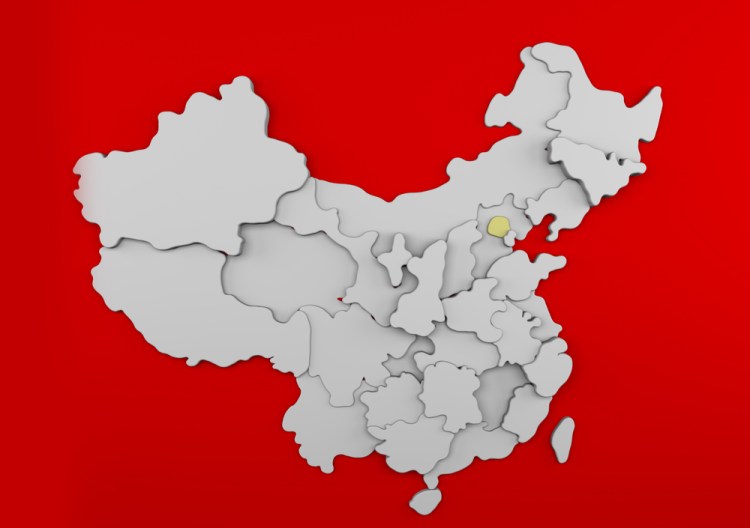This sponsored post is produced in association with Mobvista.
The boom in inexpensive smartphones has unlocked a whole new generation’s worth of consumers in places that haven’t had Internet access until now — and that means huge new opportunities for global mobile marketing on both sides of the world.
Wei Duan, CEO of Mobvista, the largest global mobile marketing company in China, notes that “the world of mobile Internet has developed from a U.S.-unipolar pattern to a tri-polar one: the U.S., China, and India,” with India and China boasting over 900 million mobile users.
And according to eMarketer, the U.S. and China are the leading global markets, driving mobile ad spending growth. In both countries, mobile is set to become the majority of digital ad spending next year. U.S. advertisers are predicted to spend about $40.24 billion reaching consumers across mobile devices, which is more than double the total from 2014. In China they’ll be investing more than triple the amount spent in 2014, or $22.14 billion.
Penetrating the U.S. market
“Chinese Internet companies have grown by leaps and bounds since 2012, along with the rapid development of mobile Internet,” says Duan. And, he continues, “As the domestic market became saturated, more companies with technological and capital resources chose to branch out into the global markets.”
Though the explosive growth in mobile marketing is a world-wide trend, Duan notes that the “open and inclusive” U.S. market is a particularly tempting target for Chinese companies. Not only do American consumers spend about 41 percent of monies on apps from outside the U.S., American mobile companies outspend other markets in mobile marketing, with budgets jumping from $3.6 billion in 2014 to $4.6 billion this year.
Companies like Mobvista, which listed publicly on NEEQ in November, are benefitting from the boom. With a market value of $1B, the company is reporting a 400 percent compound annual growth.
Unique challenges
However, Duan says, opportunities in each market also come with their own unique and complicated set of challenges. While it was relatively easier for Chinese Internet companies to penetrate emerging markets such as India and Malaysia, mature markets in Europe and the U.S. present a greater challenge.
With mature Western markets, Chinese companies are up against a host of potential landmines: incompatible economic development stages, ideological disparities, and very different user habits — all of which make determining user preferences more difficult, and the path to success a longer road.
Overcoming roadblocks
In response, the Internet industry in China has had to become formidable in terms of talents, capital, technology and product pipeline. To be successful, companies have to take an aggressive approach into global markets by leveraging their strong funding, and letting their technological strength speak for itself.
To gain a foothold, Chinese companies also often chose to start with utility apps, which are less likely to be affected by language and cultural barriers. Utility tools also tend to have a bigger customer base, and have a lower price tag for localization. On Google Play’s US ranking for free utility tool products, Chinese apps took four of the top ten spots.
Chinese games and e-commerce apps are also performing well in Western markets.
Published in July 2014, “Clash of Kings,” the real-time strategy game developed by Beijing-based developer ELEX Technology, has consistently been ranked one of the top 5 games on Google Play in 50 countries, and one of the top 10 games in 80 countries, including the U.S. With Mobvista’s help, it posts 1M installs and 600K incentive installs monthly.
The international marketing platform AliExpress, owned by e-commerce company Alibaba, provides U.S. users with quick access to products and services from China and other parts of the world. Mobvista brings in about 50,000 new users to AliExpress every day with a conversion rate of 4.5 percent, helping AliExpress rank among the top ten apps on Google Play in the U.S.
The outlook for U.S. mobile marketers
Overall, however, the U.S. continues to dominate the market, and “the key issue,” Duan says, “is whether the whole industry, including Chinese players, can provide U.S. app advertisers and developers with what they want the most — to acquire new users globally and monetize their mobile internet traffic.”
In China, independent global mobile marketing companies like Mobvista are positioned, in terms of physical location, local resources, and market positioning, to help leverage the unique characteristics of an emerging market. U.S. companies are currently leveraging Mobvista’s global mobile digital marketing platform to reach over 240 countries, with over 10 billion available daily impressions.
A larger overseas resource pool can offer alternatives, accommodation, and reach to marketers looking to not only penetrate deeply, but in a contextual, culturally appropriate way.
Sponsored posts are content that has been produced by a company that is either paying for the post or has a business relationship with VentureBeat, and they’re always clearly marked. The content of news stories produced by our editorial team is never influenced by advertisers or sponsors in any way. For more information, contact sales@venturebeat.com.

